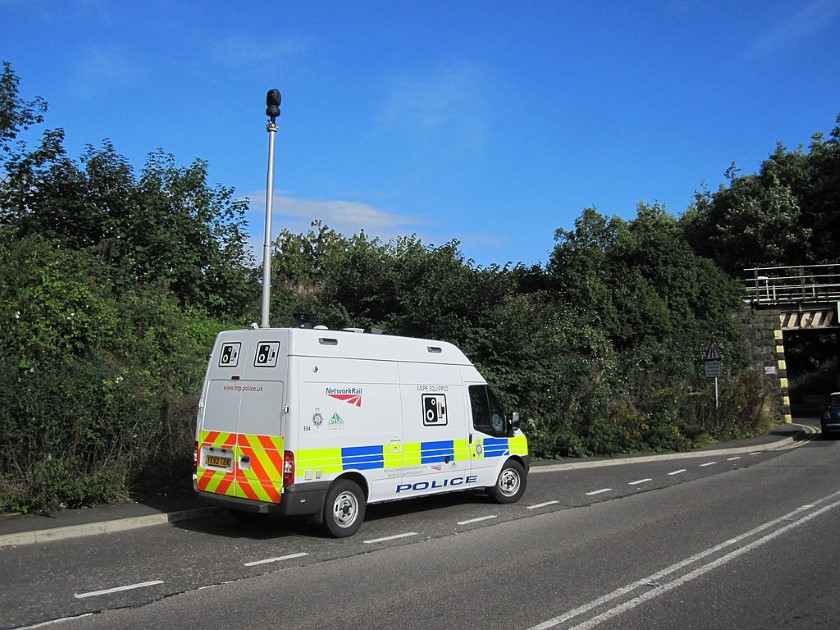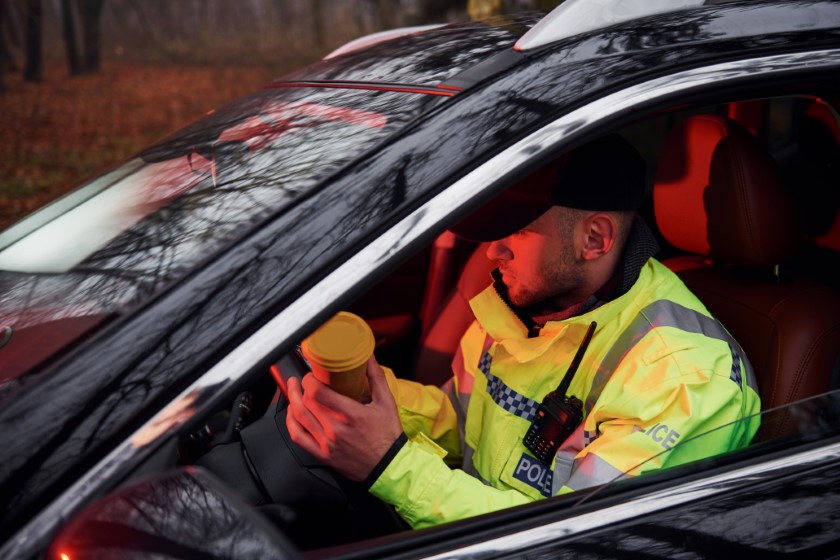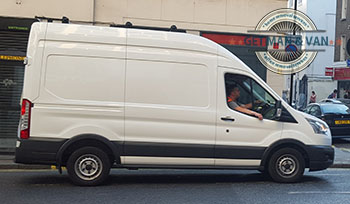
Mobile speed camera vans are one of the ways that the authorities use for traffic enforcement to catch traffic violators. Adhering to the speed limit in the particular area you are driving in, is naturally, of paramount importance to guarantee your and everyone else’s on-the-road safety.
Every once in a while, as most of us know and do, you might find yourself caught speeding, whether due to empty roads – perfect for high-speed driving, a new powerful vehicle that you just want to test, or just not paying enough attention to the posted speed limit. This might lead to you getting worried about whether or not you are to expect a speeding ticket delivered in the post any time soon, especially if you pass a mobile speed camera van – and those can easily be spotted, but sometimes too late. So, here is everything you need to know about speeding cars and speed camera vans.

Do mobile speed cameras get you from the front or back?
Back in the day, mobile speed camera vans used radar technology to detect a vehicle’s speed and determine whether or not the motorist is in violation, which of course now is outdated. These vans are designed to catch speeding motorists by using modern advanced radar and laser technology. These technologies measure and record a vehicle’s speed by emitting signals that bounce off the vehicle and return to the device, calculating the speed based on the time it takes for the signal to return – seems logical, doesn’t it. This technology is still often used in fixed-speed cameras and the so-called speed guns. In camera vans that meant that you needed to pass the van before it could detect your speed. These forward-facing cameras were posing some difficulties for police officers, and according to some people, made setting up speed traps more difficult. These vans can capture speeding vehicles traveling in the same or opposite direction.
Today, more often than not, a camera van is likely to be equipped with the latest laser technology equipment that enables the driver and the police officer to see the number plate and speed of the vehicle, even at night and low-light, while it is still behind the van. That means that you need to fine-tune your speed awareness if you want to avoid a fine and penalty points for speeding (or just to spot the vans early).
Do Speed Camera Vans Flash?
It is common knowledge that fixed speed cameras flash and radar guns produce a visible flash when a motorist is caught breaking the speed limit. You need to know that there is no visible flash coming from speed vans when they take a speed measurement – no matter whether they detect careless driving or the motorist is following the rules of the road. Average speed cameras measure a vehicle’s average speed by tracking the time taken to travel between two fixed points. If you are speeding and you pass a mobile camera van, you should assume that you have been caught breaking the law, so no reason to overthink about it. Depending on the speed you are going with, you can expect to receive a fine or a combination of a fine and penalty points on your driving license.
How do I know if I have been caught by a speed camera van?

Unfortunately, there is no direct way to determine whether or not you have committed a speeding offence by going above the speed limit and being caught by a mobile camera. Before the fine is issued there is a process that goes on in the traffic police department, and you can’t phone or check online to make sure that you are going to receive a penalty.
Once a traffic violation is detected, it takes up to 14 working days for the fine to be issued. However, it takes no more than five working days for you to receive it. That is the only way to know. You should be aware of the fact that all traffic violations and fines can be appealed via a Notice of Intended Prosecution (NIP). The most common reason fines are being overthrown is the so-called two-week rule – you are unlikely to have to pay if it took more than two weeks for the speeding ticket to reach you.
Are mobile speed camera vans always visible to drivers?
Another common misconception is that mobile speed camera vans should be marked and visible at all times. UK police officers use both unmarked cars and marked vans when they are monitoring the traffic. They can also park the van in such a way that they are not immediately visible to the motorists. Mobile vans operate at all times of the day and night as well, so there is no guarantee you will not come across a speed van if you are driving after sunset, or early in the morning, for example, making it crucial to always adhere to speed limits.

What are the differences between mobile speed cameras and average speed cameras?
Average speeds, speed cameras and mobile speed cameras are utilized for different purposes. Speed cameras work by either measuring the average speed between two points or capturing the exact speed at a single point. They differ in the way they are set up, as well as the technology they use to detect a vehicle’s speed on the road. Average speed cameras are fixed in one position. They are typically used in pairs, and they measure the average speed a vehicle is travelling between the two. Mobile cameras can be fixed in one position, or they can be moving on the road in a speed van. They are capable of measuring the speed of the vehicle with extreme accuracy and determining whether or not the motorist is violating the speed limit at any moment.
UK fixed and mobile speed camera tolerances
Some police forces in the UK have tolerances for mobile and fixed-speed cameras. Do have in mind that this does not apply to all areas in the country. For those that have decided that the fixed and mobile speed camera should have tolerances, the rule is in most cases 10% over the speed limit plus 2 mph. For example, if you are driving in an area which has a 40 mph speed limit, a mobile camera will take a picture of your car and license plate and record your speed only if you are driving over 46 mph. You should definitely not rely on that rule, as it is 100% up to the police authorities in that specific area to decide whether or not they would be following that rule.
About the Author:
Prev: « DIY Tips for how to pack glasses and plates for movingNext: Van Types and Sizes Explained: All Van Dimensions in Detail »









